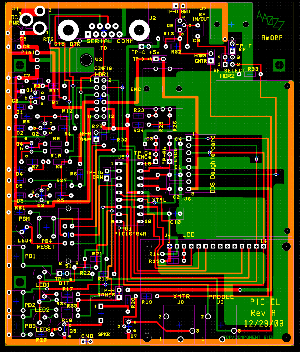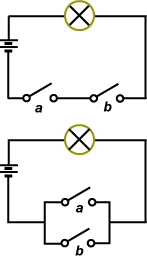 Bill has always been rather good with electrical circuits, so I was surprised the other day when he came to me for advice. He showed me his sketch of a couple of simple circuits. Each had a battery represented on the left, and a lamp at the top. Switches a and b were included at the bottom of each circuit.
“In the second diagram, the switches are in parallel. Here the lamp lights up if either switch a or switch b or both are closed. “Now, my problem is this. Is there a simple circuit which has two switches, and such that the lamp lights up if switch a or switch b is closed, but not when both switches are closed?” My intuition tells me that the answer is “Yes”, but I do wish that someone would show me how it is done! |
|
 “In this first case,” said Bill, “the switches are in series. If we close both switches, then the current flows around the circuit and the lamp lights up.
“In this first case,” said Bill, “the switches are in series. If we close both switches, then the current flows around the circuit and the lamp lights up. 
